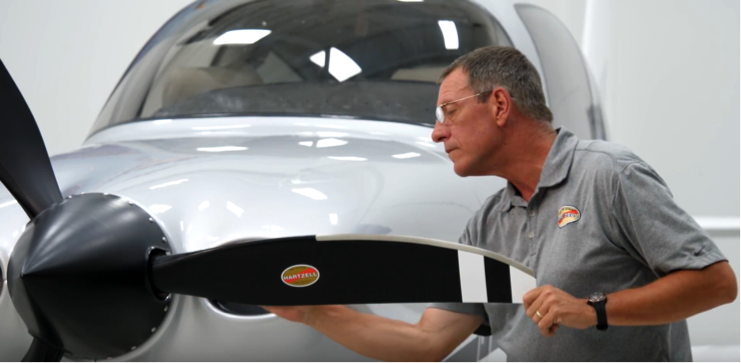
If you’re building an airplane, there comes a time when you must decide on the propeller to be installed. Performance, weight, cost, noise, diameter limits, and durability are all going to be big factors for you in making your propeller selection. But there’s another very important factor you should consider: propeller certification.
You may have an experimental airplane, but that doesn’t mean you need an experimental prop. A certified propeller can make all the difference in the safety and reliability of your airplane.
Here’s why choosing a certified propeller can be one of the best decisions you make when building your experimental aircraft:
Protect against blade failure
A propeller is by far one of the hardest working parts of an airplane. During takeoff, propeller tip speeds approach the speed of sound. As the blades claw the air, they have to endure high levels of torque and thrust, as well as vibration from the engine. Each blade alone experiences between 10 to 25 tons of centrifugal force. This adds up to tremendous stresses literally trying to pull the blades from the hub and the propeller from the aircraft.
When an engine fails, the airplane can often glide to a safe landing. But the loss of a propeller blade can spell disaster. Blade separations can induce enough vibration to shake engines off mounts, making the aircraft uncontrollable. To protect against blade failure, you need a propeller that is well-crafted and reliable.
At Hartzell, our propeller certification process ensures that your propeller has adequate strength, and also prevents fatigue problems. Obtaining certification involves rigorous stress and fatigue testing not required for experimental props. This process assures you that the propeller has been expertly engineered to resist failure, giving you the ultimate peace of mind.
Take the guesswork out of finding a prop
If you’re building one of the popular kit aircraft, the kit manufacturer will likely recommend a particular engine and propeller combination that’s been tested with the design. In this case, the choice is obvious. But what if you’re building a less-common kit, or creating a design of your own?
If you decide to use a certified aircraft engine (i.e., Lycoming or Continental), the best approach is to copy the “firewall forward” of a certified, factory-built aircraft. Propeller and engine manufacturers have already invested in field-testing to identify the combinations that offer optimal safety, reliability, and performance. Choosing an approved propeller/engine combination takes a lot of the mystery out of finding a good match for your airplane.
Finish your project faster
Installing a non-certified aircraft propeller on your experimental airplane usually requires an expansion of the FAA Phase I flight testing period from 25 hours to 40 hours, even if the engine is certified. Building an experimental aircraft is already a lengthy process, and adding more flight time will only slow your project’s progress. If your ultimate goal is to finish, fly, and enjoy your airplane, it makes good sense to select a certified propeller from a reputable manufacturer.
Find the right propeller for your experimental airplane
At Hartzell, we regularly work with home builders, whether you’re building from a popular kit or a less-common design. Many kit manufacturers will offer builders special pricing on Hartzell propellers, especially when purchased in combination with an approved engine.
We also enjoy working with those who are actively testing new technologies, including electric aircraft. As the global leader in advanced propeller design and manufacturing, Hartzell Propeller is uniquely qualified to assist in the creation of custom propellers for electric propulsion systems.
Our talented team of mechanical, aerodynamic, and structural engineers has decades of experience in the aerospace community. We will work closely with you to understand the requirements and performance objectives of your hybrid-electric or all-electric aircraft so we can design the best product for your needs. Please contact us today to learn more.